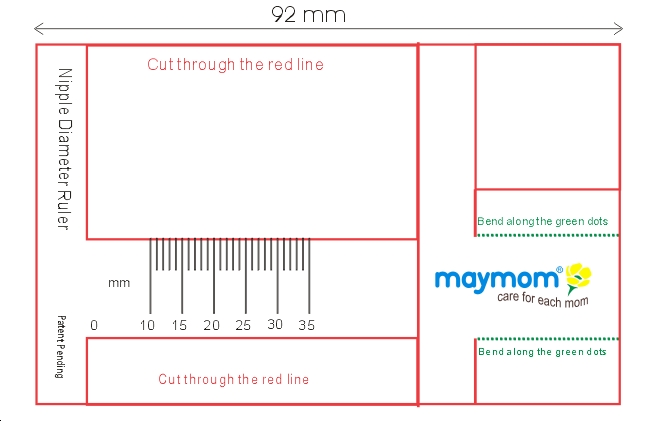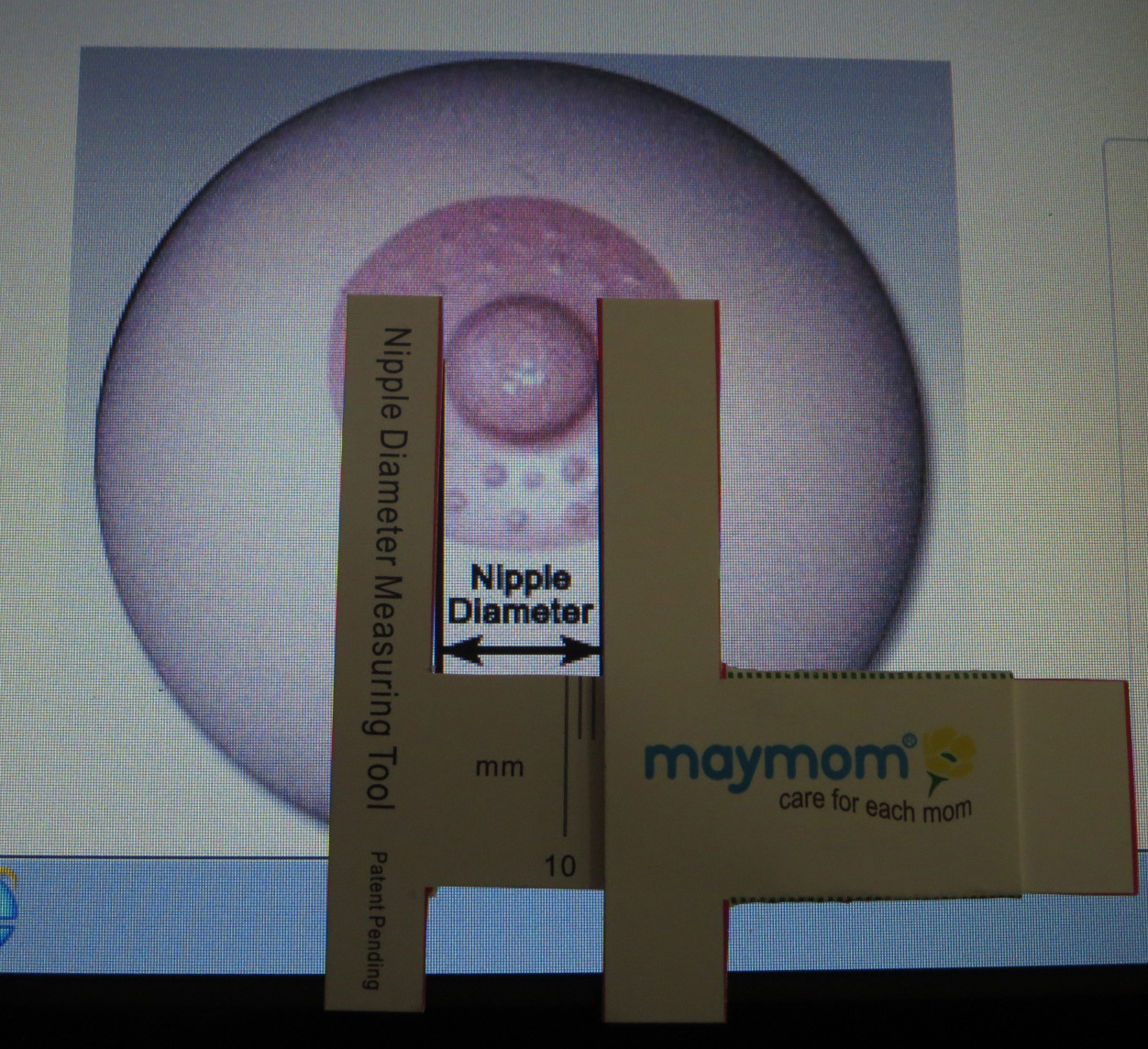Flange Sizing at a Glance
How to Choose the Right Size of Breastshields for You?
The inner diameter of the breastshield (B) should be 1-2 mm larger than the diameter of your nipple (N) AFTER a pumping session or 3-5 mm BEFORE a pumping session. You should be able to see free movement of your nipple during pumping and there should be little or no suction of the areola into the tunnel of the breastshield.
Alternatively, the Flange FITS™ method, developed by IBCLC Jeanette Mesite Frem, starts with a flange size matching the nipple tip diameter, then tests one size smaller and larger to find the most comfortable and effective option. The clinical study showed that using FITS-sized flanges (13 mm to 19 mm) improves comfort and milk yield compared to the standard 21 mm or 24 mm flanges. Click to see the list of FITS-trained specialists.

How to Measure the Diameter of Your Nipple?
Download the nipple caliper file, print it out, cut through the red line, fold along the green dots then you have made yourself a nipple diameter measuring tool! See below for the finished ruler.
Detailed Guide to Breastshield Sizing
Flange size refers to the internal diameter of the nipple tunnel at its entry point. Over the years, various methods have been proposed for selecting an appropriate flange size for effective pumping. Historically, most pump manufacturers included only 24 mm or 25 mm flanges with their products, assuming that a "one-size-fits-all" approach would suffice. However, growing awareness among International Board Certified Lactation Consultants (IBCLCs) and mothers has highlighted that individual differences in anatomy make this approach inadequate. As a result, there is now a broader understanding that flange sizing must be tailored to each person's unique needs.

To address this diversity, Maymom has developed four series of flanges designed to accommodate different nipple sizes and breast shapes: Classic, Crater, Comfy, and Pano. The Classic series, modeled after designs from prominent pump manufacturers, features an expanded range of nipple tunnel sizes to meet previously unmet needs. Many mothers find this series effective and well-suited to their requirements. The Comfy series alleviates pressure on the breast tissue caused by the edges of the Classic series flanges. For individuals with more rounded or ball-shaped breasts, the Crater series provides an optimal fit, while the Pano series is designed for flatter breast shapes with larger volumes. This range ensures that mothers can find flanges better suited to their specific anatomy and comfort.
When selecting a flange, it is recommended that mothers first stimulate their nipples and measure the diameter of the nipple base. A good starting point is to try a flange size 1-2 mm larger than the measured nipple diameter. Signs of an appropriate fit include free nipple movement, comfort during pumping, little or no areola is being sucked into the nipple tunnel and effective breast emptying. If these conditions are not met, trying a size up or down is advisable. Mothers who continue to experience difficulties may benefit from consulting an IBCLC. Alternatively, the Flange FITS™ method, developed by IBCLC Jeanette Mesite Frem, offers a systematic approach. This method involves starting with a flange size equal to the nipple tip diameter which is measured before stimulation and testing one size smaller and one size larger to identify the most comfortable and effective option. The clinical study mentioned in the beginning of this page demonstrated that using FITS-sized flanges, ranging from 13 mm to 19 mm, improves comfort and milk yield compared to the standard 21 mm or 24 mm flanges.
Link to the full article: https://journals.sagepub.com/doi/10.1177/08903344241296036 (Flange Size Matters: A Comparative Pilot Study of the Flange FITS™ Guide Versus Traditional Sizing Methods)
Search for lactation professionals who have expertise in using Flange FITS™ method? Visit Babies in Common Professionals Database.






